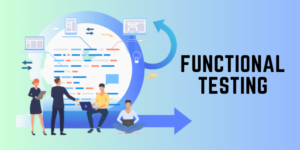Functional testing is a crucial part of software testing that evaluates the system against functional requirements, ensuring the software functions as expected and meeting user needs and business objectives. FITA Academy‘s Software Testing Course in Coimbatore offers placement assistance for students to enhance their employability. Here are some essential functional testing types:
Unit testing
Developers usually perform initial or preliminary testing focusing on the smallest software design unit. This type of testing, known as unit testing, is carried out on individual units or groups of interrelated units to check their functionality. Typically, developers or programmers are responsible for performing unit testing, using sample inputs to observe the corresponding outputs.
Smoke Testing
Software testers also use this significant testing technique. Ensuring the program or application being tested is stable and suitable for additional testing is one of the goals of this kind of software testing. The testers approve the software build and continue with the following software testing steps only if it is deemed stable.
Sanity Testing
This proper testing technique is frequently carried out ahead of more in-depth functional or regression tests to confirm the recently added functionalities. As soon as the build is obtained, this testing technique is used to see if the recently introduced code modifications are functioning as intended. The Software Testing Classes in Madurai cover different types of testing performed at various phases of the software lifecycle.
Integration Testing
Integration testing is a crucial software testing method where individual test units are combined and tested as a group. This testing method aims to detect faults in the interaction between integrated units. It involves testing the unit components that have already been tested and building a program structure based on the same. Programmers usually perform integration testing to ensure that the software functions seamlessly.
Ad-hoc Testing
This unexpected and unplanned testing process is frequently carried out without planning or test design papers. The software tester attempts to break the system by randomly trying the system’s functioning, usually performed by the testing team. To detect bugs and break the program, the team should have a solid understanding of the domain and application procedures.
Interface Testing
This type of testing is typically done when the software has one or more interfaces, such as a graphical user interface, command-line interface, or application programming interface, to understand how they interact with users or other software. These interfaces act as a bridge for the software to accept input from the user and deliver output to the user. The Software Testing Course In Hyderabad teaches students manual and automated testing skills to become proficient in software testing.
Regression Testing
Regression testing is an efficient software testing method whenever a new module is added to the program. This type of testing guarantees that the entire software component functions correctly after adding new components. This technique helps verify and ensure the new functionalities do not affect the existing features.
Black Box Testing
The black box is a vital software testing method in which testers are not required to understand the software’s coding or underlying structure. The process of black box testing is solely based on testing the system with different inputs and confirming the findings against the intended output. Black box testing has its Software Testing Life Cycle (STLC), and the method’s primary focus is confirming functional requirements. It is one of two components of box testing, the other being white box testing.
White Box Testing
White box testing is a method that involves understanding the internal structure and implementation of software. Testers use this approach to check the input and output flow, enhance the usability design, and improve the software’s security. White box testing is the contrary of Black box testing and is also known as white box penetration testing, unit testing, white box mutation testing, and more.
User Acceptance Testing
Ensuring all features work according to the detailed requirements before deploying software into the production environment is essential. As a final step before production, the software should be shown to the product owner for evaluation. If the User Acceptance Testing (UAT) succeeds, the customer can accept or reject the application. To understand software testing concepts in-depth, you can join the Software Testing Course In Pondicherry, which focuses on providing good knowledge and training.

